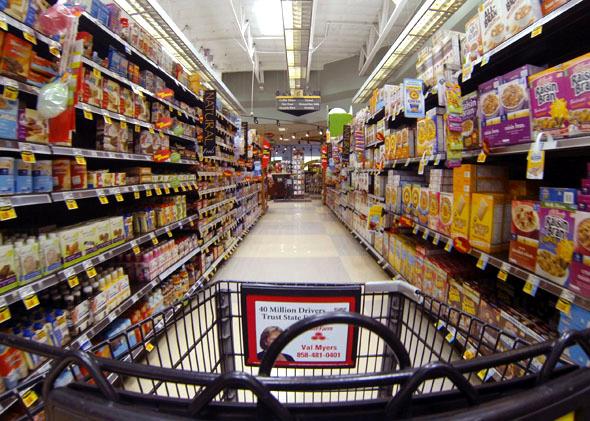It’s a little lost in the high-stakes drama of government shutdowns and the debt-ceiling crisis, but another battle is shaping up over the future of agricultural and nutrition policy in America. Specifically, House Republicans have been moving forward with legislation to substantially reform the “farm bill” with a morally obscene plan to substantially cut food-stamp spending while leaving agricultural subsidies unscathed. There’s no conceivable justification for this. There are lots of hardworking farm owners in America, but on average they’re richer than most Americans and have fared better during the weak economy. If Congress wants to spend less, then by all means spend less. But why target the cuts on the poor while sparing the rich?
Outrageous Republican priorities aside, this is also an opportunity to fix the real problem with the food-stamp program: the food part. Why give poor people grocery vouchers when it would be simpler, easier, cheaper, and more helpful to give them money instead?
The logistical downsides of the current system are many. Scroll over to the Agriculture Department’s Supplemental Nutrition Assistance Program (SNAP) page, and you’ll find lots of links to explainers of various things. Here’s how you apply to make your store eligible to accept SNAP benefits as payment. Here’s how you check the status of your application. Since liberals love farmers markets almost as much as they love anti-poverty programs, there’s a special program for food stamps at farmers markets. You can even find information on how to train your staff to deal with customers using SNAP benefits.
By contrast, nobody has to apply for eligibility to accept money. Nor do stores need special training programs for what to do when customers want to pay with money. Farmers markets are all set up to accept money already. Money, basically, is a great way to pay for things. So if the idea is to help poor people buy more stuff, the best way to fulfill that mission is to give poor people some money.
Historically speaking, poor people receive food stamps instead of money because of the power of the farm lobby. The main constituency for agricultural subsidies is and has always been rural legislators. These folks come from both parties, but most of them are Republicans. To expand their coalition, rural conservatives joined forces with urban liberals to create a parallel set of programs to subsidize low-income food buyers. That’s how Bob Dole became one of the early champions of food stamps. By pairing farm subsidies with food stamps for a single “farm bill,” agribusiness interests created an unstoppable legislative juggernaut. The basic logroll was urban liberal votes for farm subsidies in exchange for rural conservative votes for anti-poverty money—but with the stipulation that the anti-poverty money be specifically focused on agricultural commodities rather than cash welfare.
In the grand scheme of things, this was not such a terrible bargain for liberals to strike. But if rural conservatives are going to default on their side of the bargain, urban liberals ought to do the same. Free poor people from the shackles of food stamps and let people buy what they want with their money.
Unfortunately, there’s some momentum toward more government control over how poor people spend money, not less. New York Times food columnist Mark Bittman has been a leading proponent of the idea that SNAP should become more prescriptive and ban “soda and other junk masquerading as food” from eligibility, just as we’ve already done with alcohol and tobacco products.
If the existing paternalistic elements of SNAP were a smashing public health success, I might have more sympathy with this view. But their operation in practice should push us in the opposite direction. Back when I first lived in Washington, one of my neighbors—a mother on SNAP benefits—was a smoker, just like me at the time. Cigarettes are bad for you, but the shared experience of smoking out in front of your house tends to bring people together from different walks of life. A few times, we even orchestrated a swap in which she used her benefits card to buy me boxes of Diet Coke and I bought her cigarettes in exchange. She was poor, not stupid—fully capable of trading for what she wanted. The program rules merely added another extraneous hassle to her life.
The flipside of this paternalism is that legally restricting SNAP benefits to apply only to grocery purchases is weirdly punitive to the thrifty. Want to dine on lentils and brown rice for six months to save up money for car repairs? Well, you’re out of luck. Unless, that is, you come up with some scam to trade your extra benefits for money. The poor can end up either condemned for irresponsibility or condemned for fraud.
The only real winners from focusing this keystone anti-poverty program on groceries are agribusiness interests. As long as those interests were delivering the goods—in the form of conservative votes for spending money on the poor—that was a reasonable enough compromise. But now that today’s more partisan Republicans aren’t interested in the deal, it’s time for liberals to scrap it, too. Money is the best anti-poverty program.
